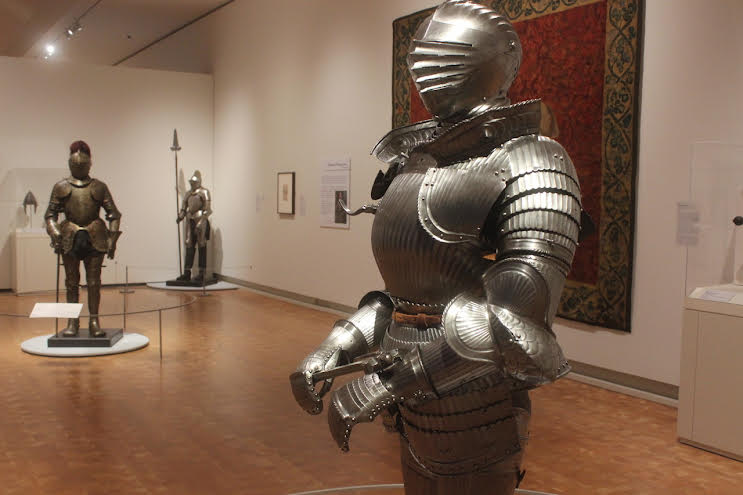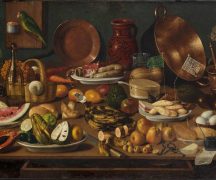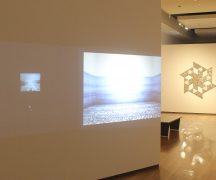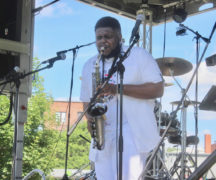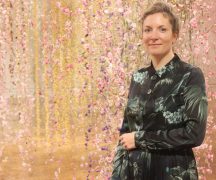By DAVID DUPONT
BG Independent News
If you go about the business of bludgeoning or being bludgeoned, you may as well do it in style. That those mythic knights in shining armor – celebrated in the tales of King Arthur and the Knights of the Round Table and Monty Python and the Holy Grail – went to battle well-dressed is evident in the exhibit “The Age of Armor: Treasures from the Higgins Armory Collection at the Worcester Art Museum” now at the Toledo Museum of Art.
The armor is embossed with figures from the ancient world and symbols of grandeur.
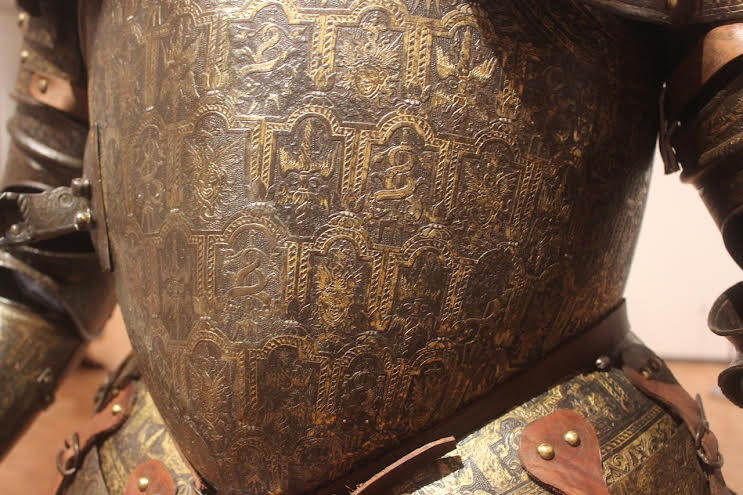
And later when the mounted knight became an anachronism on the battlefield with the advent of fire arms, these suits of armor persisted in tournaments. And they were crafted for ceremonial purposes. Some decorative neck pieces persisted well into the modern era.
Suits of armor were “symbols of marital prowess and individual identity,” said Sophie Ong, the museum’s Hirsch curatorial fellow, who curated “The Age of Armor” in Toledo with Diane Wright, the museum senior curator in glass and contemporary craft.
All this and more is covered in the exhibit which takes us from ancient times through a prototype for a World War I helmet, from Europe to southern Africa to Asia.
The focus, though, is on that shining armor worn by knights of yore.
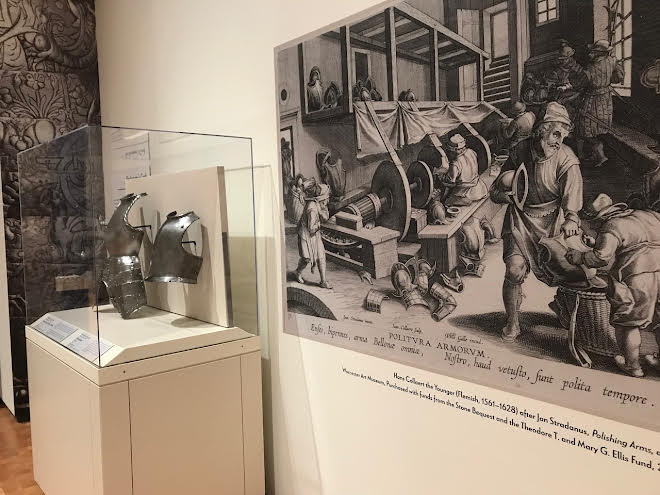
The work comes from the Worcester Museum in Massachusetts, but before that the collection was brought together by John Woodman Higgins, an industrialist who owned Worcester Pressed Steel. He was fascinated by the craft behind the manufacture of armor. “In his eyes the armorer’s art was the pinnacle of metal working and steel production,” Ong said.
Higgins created his own armory museum that opened in 1931 but closed after his death. His collection was absorbed by the Worcester Museum.
Higgins was inspired by his work with Bashford Dean, the curator of arms and armor at the Metropolitan Museum of Art in New York City. Together they worked on a prototype of a helmet for soldiers in World War I. Their design influenced by the ancient armor, however, proved impractical. The prototype is displayed at the end of the exhibit.
Strange though how the design has not advanced much, except for material, from a Greek Corinthian helmet from 2500 years earlier.
These two pieces are chronological outliers. The focus is on European armor from the Middle Ages, and how it developed.
Even those suits designed for battle appear in fine shape, unaffected by the evolving arsenal of weaponry, also on display, that were designed to pierce, pry, and batter the armor and humans within.
The manufacture of armor involved a range of craftsman, including draftsmen and goldsmiths. The acclaimed artist Albrecht Dürer designed suits of armor, including one on display in Toledo for the Holy Roman Emperor Maximillian I. Dürer’s work as a printmaker is also on display here. Printmakers adopted the techniques used to decorate armor.
The craftsmanship adapted as how the armor was used changed. Armor made for tournaments was far heavier than that used for battle. And ceremonial armor with its finely, and thinly, wrought designs would not hold up to combat, in war or sport.
For all the seriousness of the subject matter, the final gallery includes a bit of whimsy.
A print of a study for Norman Rockwell’s “The Nightwatchman” – an allusion maybe to Rembrandt’s masterpiece, “The Night Watch” – shows the titular subject making himself comfortable in the Higgins Armory surrounded by armor on display, including a couple of sets included in the Toledo show.
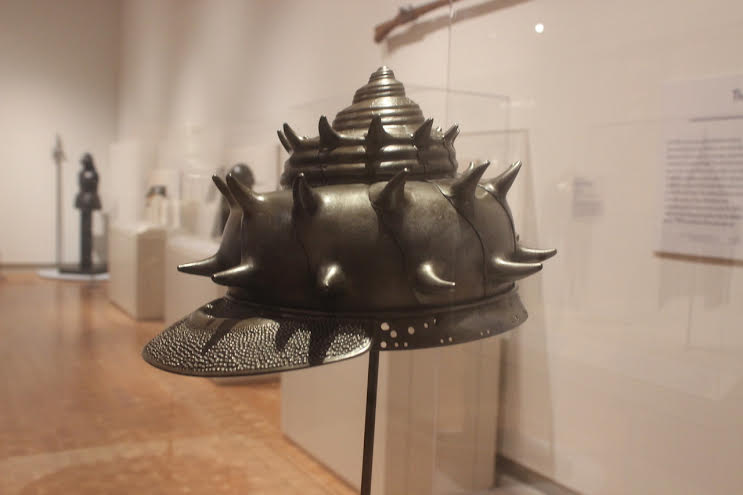
Museum Director Adam Levine said this is the kind of show the museum should be doing. It has a global reach, makes connections to the world beyond art, and appeals to the general public.
The hope is, he said, that when visitors leave the show, which is located in the Levis Gallery in the far reaches of the museum, they will experience the art within the other galleries along the way.
The show, on exhibit through Feb. 27, is ticketed. Tickets are $10 with discounts for seniors, children, students, and military. Museum members are admitted free.
Toledo Symphony in space
This morning (Nov. 11) the Toledo Symphony Orchestra presented it first Young People’s Concert of the Year.
In collaboration with the space education group KV 265 it presented a Science and Symphony program featuring astronomer and photographer José Francisco Salgado.
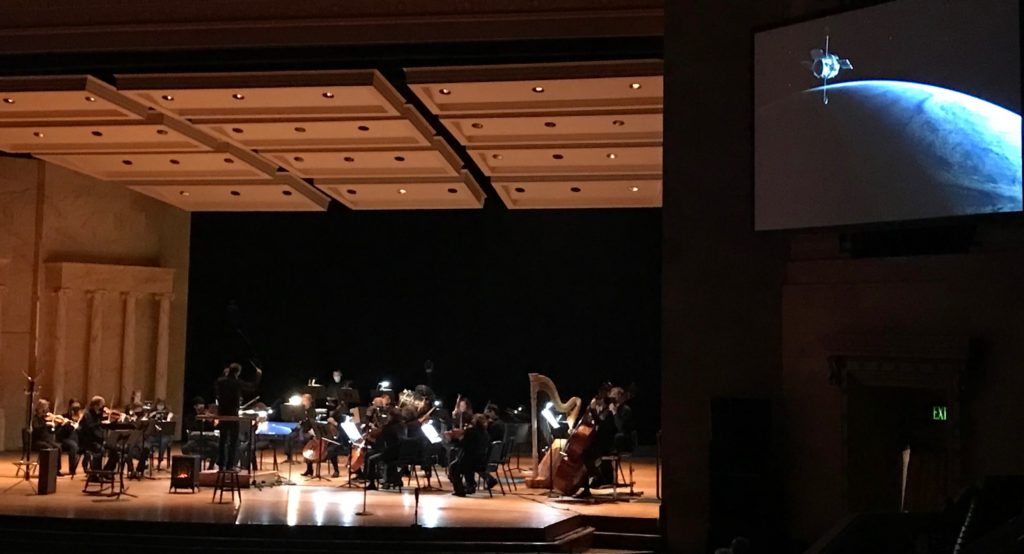
The show opened with images of the earth from space taken from the Hubble Telescope and from and within the International Space Station projected on the HD screens above and to the side of the Peristyle stage.
An astronaut floating weightless through a cargo bay fit strikingly well with Johann Strauss’ “Blue Danube Waltz.”
That was the introduction.
Salgado came out and gave a brief and very understandable explanation of the Northern Lights. Throughout the northern reaches of the earth, native people have developed their own legends about the genesis and meaning of the cosmic light show. And hearing that they are caused by electrons emitted by the sun interacting with atoms and molecules in the outer earth atmosphere does nothing to detract from their beauty.
Instead of playing favorites among the many myths, the program presented its own story, set to the music of Christopher Theofandis. “The Legend of the Northern Lights,” tells one family’s story. Two actors portray a grandfather and a grandson. The grandfather tells of a time with his great-great grandparents encountered a stranger, an otherworldly figure, who revealed the lights to them.
His instrument of revelation, fitting for the program, was a violin, given voice by concertmaster Kirk Toth.
The shimmering images of the waving fingers of colored light were captured by Salgado in northern Canada. Others were taken from the space station.
The program will be reprised tonight at 7 p.m. in the Peristyle. For ticket information, visit toledosymphony.com or call 419.246.8000.

